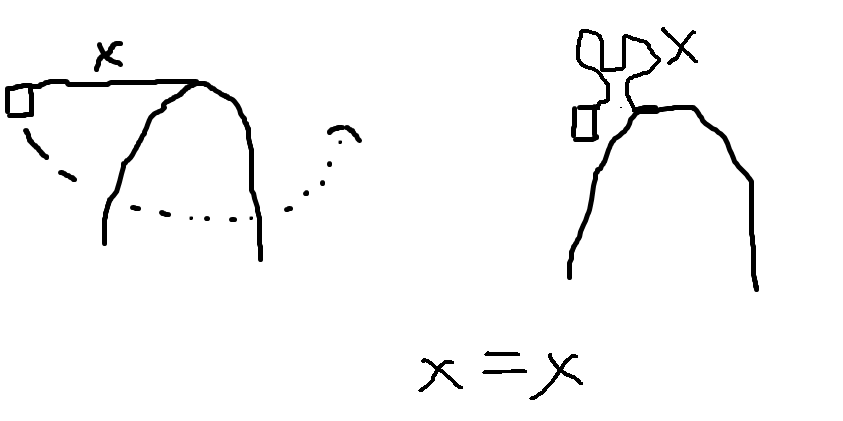- Joined
- Apr 29, 2011
- Messages
- 2,171
- Reaction score
- 863
TBR Physics I page 158 #13
The passage present an example of an object being dropped (but attached to a string). Imagine the object a distance X from the structure that is holding the string.
As you would expect, upon dropping the object, the object undergoes a pendulum-like motion with energy conservation.
I could very well be incorrect but I believe TBR implies that regardless of the magnitude of distance X, the height that the object obtains after being dropped is the same. I draw this conclusion from TBR's discussion about how the amount of "slack" rope has no effect on the height reached.
But this result seems unintuitive to me.
Here is a depiction:

So in the second scenario, I should expect the object to reach the initial height?
The passage present an example of an object being dropped (but attached to a string). Imagine the object a distance X from the structure that is holding the string.
As you would expect, upon dropping the object, the object undergoes a pendulum-like motion with energy conservation.
I could very well be incorrect but I believe TBR implies that regardless of the magnitude of distance X, the height that the object obtains after being dropped is the same. I draw this conclusion from TBR's discussion about how the amount of "slack" rope has no effect on the height reached.
But this result seems unintuitive to me.
Here is a depiction:

So in the second scenario, I should expect the object to reach the initial height?
Last edited:
